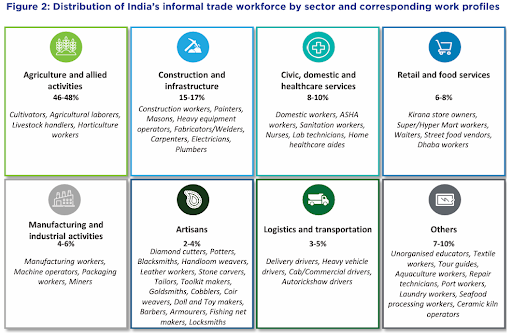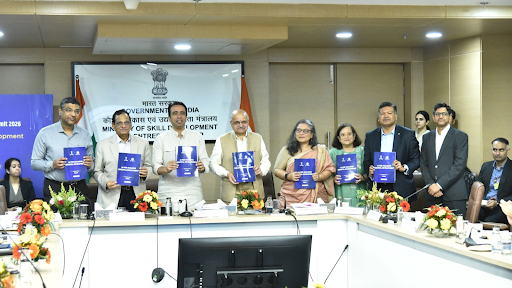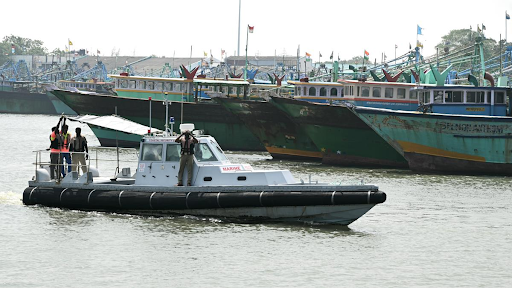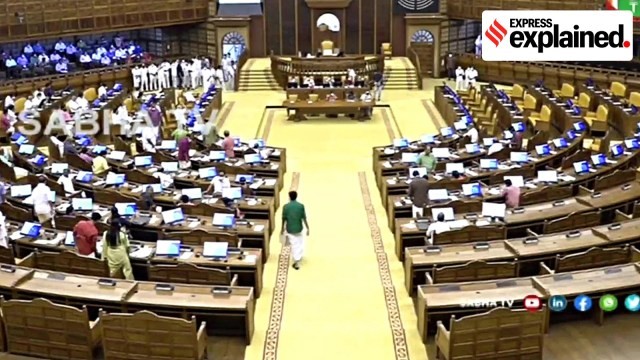Copyright infringement not intended
Picture Courtesy: DD NEWS
Context
NITI Aayog unveiled a new Roadmap on AI for Inclusive Societal Development, placing India’s 490 million informal workers at its centre.
Background
NITI Aayog earlier published the National Strategy for Artificial Intelligence (2018), which laid foundational ideas around AI adoption, governance, and public-good domains. The new roadmap builds on that legacy, with a focus on inclusion, equity, and frontline impact.
Traditional AI/technology policies emphasize efficiency, growth, and competitiveness. But without deliberate design, the benefits of AI can concentrate in elite or urban areas, widening inequality.
In India, the informal sector is diverse, and underserved: many informal workers lack formal contracts, credit access, social protections, or digital footprints.

Vision and Strategic Pillars of the Roadmap
The roadmap adopts #AIforAll — the idea that AI should not be limited to urban, highly skilled, or elite domains, but must reach rural, informal, underprivileged populations.
The roadmap states the aim is to “unlock the potential of informal trade workforce” — over 90% of India’s labor force.
It reframes AI not just as a growth engine but as a development tool — a means to reduce inequities in access, raise incomes, ensure dignity, and bring people into formal systems.
What strategic pillars does the roadmap adopt?
Accelerated adoption
Encouraging use of AI and frontier tools across public and private sectors — especially in domains that touch informal workers (health, agriculture, skilling).
R&D innovation
Investing in Generative AI, domain-specific models, low-cost AI tools, and new architectures suited to Indian contexts.
Enablers
Building foundational systems and capabilities:
- Data ecosystems, datasets platforms, interoperability
- Computing infrastructure, storage, connectivity
- Skills and capacity building
- Governance, ethics, auditability, accountability
Institutionalization
Creating bodies, platforms, and mechanisms (e.g. the Frontier Tech Hub) to coordinate across states, sectors, academia, industry, and civil society.
Targeted mission orientation
The roadmap proposes Mission Digital ShramSetu — a mission-mode structure to drive AI adoption, scaffold scale, and ensure inclusion.
Sectorwise Deployment: From Vision to Application
- Health
India has severe imbalances in health infrastructure: rural and remote areas often lack specialists, advanced diagnostics, or timely screening. AI can help bridge such access gaps.
Use-cases proposed in the roadmap
- AI-based diagnostics: models for radiology, ophthalmology scans, pathology.
- Predictive analytics: forecasting disease outbreaks, resource demand.
- Remote monitoring: AI-powered telemedicine, home health monitoring.
- Decision support systems for frontline workers.
Risks / limitations
- Many AI models are trained on data from urban hospitals; their performance may degrade in rural settings or on diverse populations with different disease profiles.
- Data privacy, informed consent, and security must be robust—especially when handling sensitive health data.
- Infrastructure constraints: availability of electricity, connectivity, imaging equipment may be weak in remote areas.
- Agriculture
According to the Economic Survey 2024–25, over 46% of India’s population depends on agriculture. Small and marginal farmers struggle with uncertainty — in weather, pests, soil health, market access.
Use-cases proposed
- Soil health prediction, nutrient recommendation systems.
- Pest/disease forecasting from satellite or drone imagery.
- Precision advisory for irrigation, sowing, input timing.
- Market linkage platforms (connecting farmers to buyers) enhanced with AI-based price forecasting.
- Supply chain optimization, post-harvest loss reduction.
Risks / limitations
- Variability at micro scale (soil, climate) makes generalized models less accurate.
- Many farmers lack smartphones or digital literacy to adopt AI tools.
- Sensor, drone infrastructure, or data labeling costs are high.
- Data coverage gaps in remote or underserved regions.
- Education
India faces wide disparities in quality of education, teacher availability, and learning outcomes — especially across rural, underprivileged regions.
Use-cases proposed
- Adaptive learning platforms: customizing curricula to student pace, strengths, weaknesses.
- Intelligent tutoring systems in multiple languages.
- Early warning systems to identify students at risk of dropouts.
- Analytics for resource allocation, teacher performance, curriculum improvement.
Risks / limitations
- Risk of deepening the gap: better schools may adopt AI faster, leaving weaker ones even further behind.
- Many models may favor dominant languages or contexts; regional dialects or underrepresented student profiles may be marginalized.
- Algorithmic bias: unfair treatment or misclassification of students.
- Infrastructure gaps—connectivity, devices, electricity.
- Smart Cities / Infrastructure & Mobility
India is urbanizing fast. Cities face challenges of congestion, waste, pollution, infrastructure maintenance, energy efficiency, and public service delivery.
Use-cases proposed
- AI for traffic flow and congestion management.
- Predictive maintenance of roads, bridges, utilities.
- Waste collection optimization.
- Urban mobility planning, demand forecasting.
- Energy management (smart grids), water allocation, flood prediction.
Risks / limitations
- Fragmented city governance: many agencies, varied capacities, inconsistent data standards.
- Privacy concerns: tracking mobility or citizen movement data.
- Interoperability challenges: multiple legacy systems needing integration.
- Real-world diversity: cities differ tremendously, making “one-size-fits-all” AI solutions ineffective.
Critical Enablers — Data, Infrastructure, Skills, Governance
Data ecosystem: fragmentation, sensitivity, interoperability
Challenges
- Data is fragmented across states, departments, agencies, private entities.
- Many informal workers lack digital identities or verified credential histories.
- Consent, anonymization, privacy constraints.
- Metadata, standards, interoperability are weak or inconsistent.
Roadmap proposals
- IndiaAI Datasets Platform (or similar) for curated, interoperable datasets.
- Shared standards for metadata, data exchange, APIs.
- Federated data-sharing models that preserve privacy while enabling AI.
- Use worker personas, segmentation, to guide dataset design.
Infrastructure (compute, connectivity, storage)
Challenges
- AI workloads need high-performance computers (GPUs, TPUs), large storage, stable power, and cooling infrastructure.
- Connectivity & broadband penetration still lags significantly in rural and remote areas.
Roadmap proposals
- Build AI-ready data centres across India.
- Push to make India a global AI datacentre hub (with clean energy, governance incentives).
- Improve last-mile connectivity and digital infrastructure in underserved areas.
- Leverage cloud and edge computing models to reduce latency and cost.
Human capacity & skills
Challenges
- A shortage of trained AI researchers, engineers, data scientists — especially outside Tier-1 cities.
- Digital literacy among informal workers or frontline personnel is often low.
- Brain drain or mismatch between skills supply and domain needs.
Roadmap proposals
- Integrate AI / data curricula across universities, polytechnics, teacher training institutes.
- Establish AI / data labs even in Tier-2 / Tier-3 towns.
- Upskill government employees, frontline workers, extension agents.
- Incentivize industry–academia collaborations, fellowships, scholarships.
From Roadmap to Reality: Implementation & Scaling
Institutional architecture and pilot initiatives
- Frontier Tech Hub: a central coordinating “action tank” to bring together government, academia, industry, civil society, and states.
- Mission Digital ShramSetu: a national mission to operationalize inclusive AI deployment among informal workers, combining technology, capacity building, and partnerships.
- Frontier Tech Repository & Frontier 50 initiative: record "impact stories" of AI deployment; select 50 aspirational districts/blocks to implement replicable use-cases.
- State & district partnerships: the roadmap suggests close collaboration with states for customizing deployments, leveraging local institutions and feedback loops.
Monitoring, feedback, and course correction
- Define outcome-oriented Key performance indicators (KPIs) (for example, increases in worker income, productivity gains, health access, dropout rates).
- Use third-party audits, citizen feedback channels, continuous evaluation.
- Adopt a fail-fast, learn-fast mindset — scale only those pilots that demonstrate real impact under varied conditions.
- Dynamic updating: the roadmap explicitly calls itself a “living document,” meant to evolve as new tech, insights, and constraints emerge.
Way Forward — Strategic Recommendations & Safeguard
Immediate actions to prioritize
- Pilot in difficult terrains (remote, underserved districts) to stress-test assumptions.
- Fast-track data governance frameworks, privacy rules, anonymization standards.
- Conduct state readiness audits (compute, infrastructure, human capacity) to map gaps.
- Form an AI oversight or ombudsman body for recourse, audit, transparency.
- Start with “low-hanging fruit” use-cases where data is available, stakes are moderate, and impact is tangible.
Medium- to long-term strategic steps
- Promote open-source India-centric models adjusted to Indian languages, contexts, marginalized geographies.
- Establish shared digital identity / credential systems for informal workers (link across Aadhaar, e-Shram, UDYAM).
- Deepen multi-stakeholder partnerships — civil society, grassroots organizations, research institutions — so that affected communities help co-design solutions.
- Ensure periodic revisions of the roadmap; adopt agile policy mechanisms.
- Align with international norms (e.g. AI ethics, multi-national data treaties), but maintain Indian digital sovereignty.
Safeguards, monitoring, and correction
- Mandate transparency, audit trails, algorithmic explainability where possible.
- Require participatory design: affected groups should have a voice in tool design, testing, deployment.
- Monitor and evaluate unintended consequences (job displacement, surveillance, misuse).
- Build institutional resilience so policies evolve.
Conclusion
NITI Aayog’s AI roadmap aims to harness technology for inclusion, empowering informal workers and reducing inequality. Its success depends on strong institutions, data, infrastructure, and political will to turn AI into a force for equitable, people-centered growth by 2047.
Source: DD NEWS
|
PRACTICE QUESTION
Q. How can India leverage its demographic dividend to become a global leader in Artificial Intelligence? Discuss. 150 words
|
Frequently Asked Questions (FAQs)
The IndiaAI Mission, approved in March 2024 with a budget of over ₹10,000 crore, is a strategic initiative to build a robust and inclusive AI ecosystem. It aims to position India as a global leader in artificial intelligence by focusing on seven key pillars: computing infrastructure, innovation, datasets, application development, skills, startup funding, and responsible AI.
BHASHINI is an AI-powered language translation platform developed by MeitY. It aims to enable access to digital services and the internet in various Indian languages, including voice-based access, to promote digital inclusion and break language barriers.
AIRAWAT (AI Research, Analytics and Knowledge Assimilation Platform) is a shared, high-performance computing infrastructure for AI research. It provides a common computational cloud platform for the academic community, startups, and research labs to develop and test AI applications.










